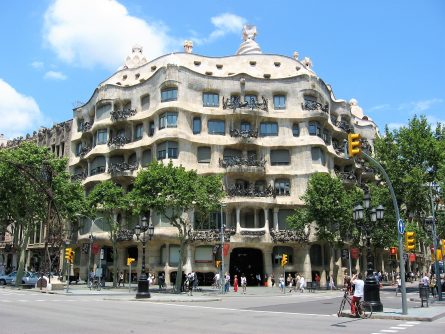Covid Travel Restrictions.
Covid travel restrictions are difficult to follow. They change, they mutate, they annoy but they are an integral part of contemporary travel. To a great degree, we have become more fearful of bureaucracy than the virus itself.
On my way home from France, I was wandering past the Sagrada Familia in Barcelona, checking on its progress, when my phone pinged and an email arrived. This email came from the PCR testing laboratory, and would tell me if I was able to return to Canada or not.

I opened the email with slightly more trepidation than I had anticipated, and breathed a small sigh of relief.
Travel today is fraught with covidy restrictions. Some seem sensible, some seem idiotic and some seem to change with the wind. Trying to navigate this thicket of restrictions is difficult, but as we look to travel this winter or beyond, we need to be aware of what traps lie in wait.
An article in this week’s Economist (sadly behind a paywall) estimates that adherence to today’s spaghetti-spill of regulations would, as traffic climbed back to 75% of pre-pandemic levels, delay the average international traveller by 5.5 hours.
That is a long, long and basically unnecessary waste of time. Unnecessary because the time is simply spent waiting, not “being processed” and the cause of the wait is the myriad of locally-produced documentation.
In Canada alone we have thirteen competitive health authorities developing their own protocols and proofs. Individual credentials are unreadable out of the province; it is inconceivable that the development of a vaccination card has not been an inter-Provincial task.
And the same goes for Germany, South Africa, the USA and many other federated countries.
In general, there are three issues: restrictions imposed by the destination country, transit countries and Canada itself upon one’s return. Limitations are variously based on ones’ nationality, one’s residency and where one has travelled during the previous fourteen days.
As you can imagine, these issues can complicate fast.
There are websites that try to keep track of these changes, the best of which I believe to be the IATA link, https://www.iatatravelcentre.com/world.php and this more general site: https://apply.joinsherpa.com/map.
For those of us planning travel, however, we need to be very aware of the requirements and how much, if at all, our travel insurance will assist us should we run afoul of the rules. Know, as well, that the rules change.
The Sagrada Familia is coming along nicely, thank you. I have been watching it evolve for fifty years now, and suspect that in fifty more, it will still not be finished. It is, however, a fine reason to visit Barcelona.

My concern, however, was simple. What if my test had been positive? Would I have been obliged to go to the nearest hotel and check -in for two weeks because I appeared to be too poisonous for free movement?
Then, after the fourteen days, although Canada says “Just Fly Directly Home”, passage from Barcelona requires transit through Germany who may not take such a liberal view.
I am ready to explore, and will arm myself with a thicket of links and a sense of humour.
Once in Spain, or most other countries, life, although masked, is basically normal. The thrill that one gets from being overseas is there, the sites are there to be admired, the beaches are delightful and the cafes and restaurants wide open.
Follow the rules, plan to travel and for those who are triple-vaccinated, the world is slowly opening up again.
This article was first published by Respect News in Cold Lake, Alberta, Canada. www.respectnews.ca
